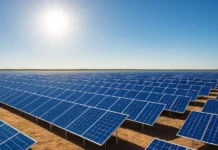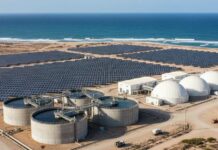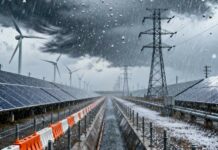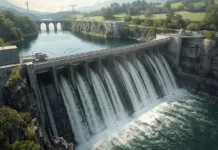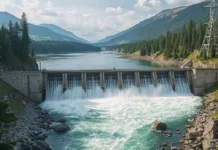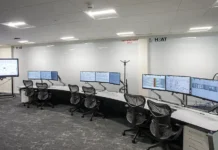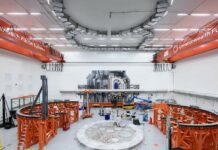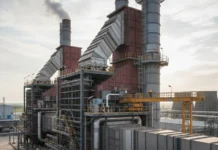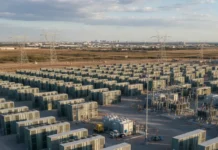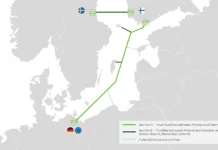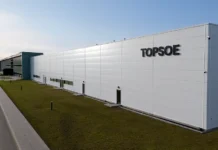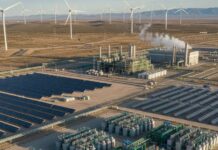There’s a quiet revolution happening on the edges of small towns and two-lane roads. It’s not another huge farm or a fancy new tech center. It’s fields where rows of solar panels and rows of veggies share the same soil and trade light and shade like good neighbors. Let’s talk less about agrivoltaics and do more of it. This shows us that clean energy and food don’t have to compete for room.
Out there, success is built on a hundred practical choices, not a single silver bullet. Farmers figure out how high to lift the tables, where to leave lanes for tractors, and how to keep gates wide enough for a flatbed when a replacement inverter shows up unannounced. And yes, the boring stuff matters: permits, access, and transport. If your project depends on moving gear or seasonal crews, you’ll end up swapping notes about trucks and training resources like go4cdl.com/ the same way you trade seed tips—quietly, peer to peer, because logistics can make or break the season.
Why panels belong in fields
The big misconception is that panels “steal” land from crops. Shade is a tool in real life. When it’s hot and dry, some shade slows down drainage and lowers heat stress. Greens with leaves don’t wilt as quickly. It rains less often, so the soil stays wet longer. Farmers use the microclimate under panels the way they use windbreaks or mulch—another lever to handle heat, water, and wind.
Get the geometry right and both harvests improve. Taller racking lets air and tractors move. Wider spacing leaves light for photosynthesis, especially in the morning and late afternoon. The panels mimic a scattered tree canopy. Birds find perches. Bees find flowers. The land stays in production year-round instead of sitting as a fenced-off rectangle of gravel.
Crops that tend to like the shade edge
- Spinach, kale, lettuce, and other cool-season veggies
- Grass herbs like parsley, cilantro, and mint
- Berries and low-growing fruit where heat can scald
- Forage mixes and native grasses for grazing under and between rows
Soil first, always
Energy projects often show up with tidy drawings and forget the ground is alive. Healthy soil turns rain into a reservoir, not a runoff event. In agrivoltaics, that’s free resilience. Skip the geotextile and crushed rock under arrays unless absolutely necessary. Plant diverse cover crops and keep them cut, not scraped bare. When it pours, water should disappear into the profile instead of racing to a culvert.
Think about roots and boots. If a site needs year-round access, build grassed lanes with firm subgrade and a thin top lift, not a permanent hardpan. Use sheep or low-impact mowers rather than heavy equipment every week. Seed mixes matter. A good blend includes:
- Deep-rooted species that break compaction and pull nutrients up
- Flowering plants with staggered bloom times for pollinators
- Ground-hugging grasses that knit the surface and stand up to tires
This is not decoration; it’s insurance. Healthy soil gives you better infiltration, less dust on modules, cooler module temps, and fewer muddy ruts when the maintenance truck arrives after a storm.
People and paths
A farm that also makes power has more comings and goings than a typical field. Deliveries, service calls, field hands, beekeepers, and sometimes school groups. Clear paths and simple rules keep everyone safe. I’ve seen the best sites run like a good farmers’ market: clear signage, no-nonsense speed limits, and a culture that says “wave, then work.”
If the site uses grazing, give shepherds or ranchers real input before you design the fence. They’ll tell you where water should be, how to set gates so a trailer can back in without gymnastics, and how high to mount combiner boxes so animals don’t rub on them. If it’s a crop site, coordinate harvest windows with inverter service schedules. The little bit of planning saves a lot of stomping around later.
Mentorship matters here, too. Many farmhands learn by doing in their first season under panels—how shade changes pest pressure, how morning dew lingers, how to stage bins so crews aren’t walking twice the distance. The same ethos applies to the power side. New techs pick up the rhythm of irrigation cycles, learn to carry a lint-free cloth for dusty glass, and wait for the harvester to clear a lane before pulling in. It’s shared space; the etiquette is half the craft.
A simple playbook for year one
Start with a pilot block, not the whole farm. Put in a few rows of racking at the height you think is right, then run a tractor through it. If the mirrors fold or someone swears, raise the tables. Measure everything. Keep a cheap weather station and soil moisture probes. The goal is not to win an argument; it’s to make next season smarter.
Document the boring stuff. Where does water pool after a storm? Which gates are too tight for a wide implement? Which inverter alarm tends to coincide with irrigation cycles? Treat these notes like recipes—pass them forward.
Most of all, keep the site open to eyes and ideas. Invite the neighboring farmer who is skeptical. Invite the extension agent. Let the local school’s science club plant a row of beans under the east edge and compare yields to the open field. Nothing defuses fear of “panels taking over farms” like a child proudly weighing a basket of shade-grown veggies.
Agrivoltaics works when we respect the farm as a system and the people who make it run. Panels are not an intrusion; they’re another tool in the shed, one that pays its own way and helps the land ride out heat and drought. Done well, the field hums with life—birds in the grass, bees on the flowers, crews in the lanes, and a quiet current flowing to the substation. Food on tables, electrons on wires, and a little more resilience stitched into the countryside.



